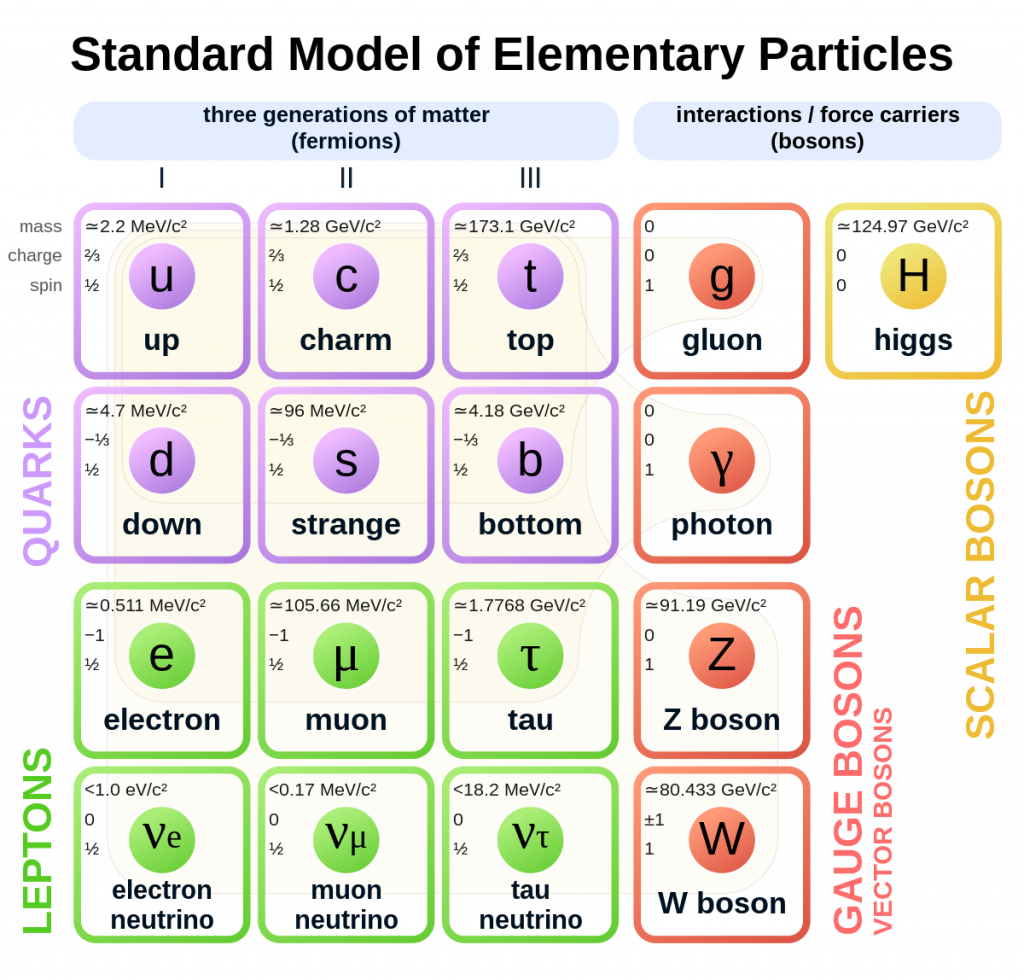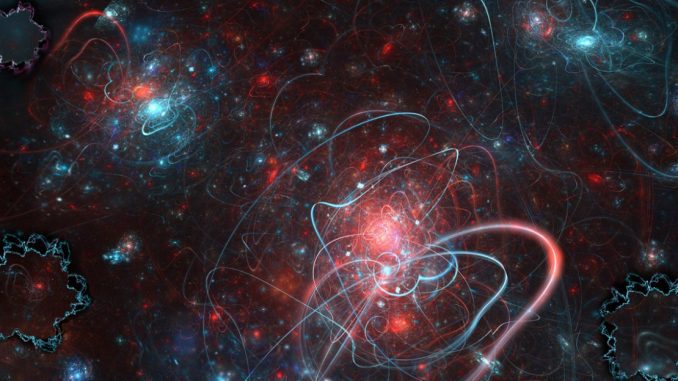Reading Time – 5 minutes, Difficulty Level 2/5
In this post we are going to challenge ourselves to understand the basic principles of String Theory in 5 minutes.
It takes two (or three)
Two great theories exist in modern physics to help explain our universe. General Relativity, our best explanation of gravity and Quantum Mechanics, which explains the behaviour of tiny particles.
These two theories don’t work together however.
Despite Relativity being able to accurately describe and predict cause and effect of gravity in the universe, it simply doesn’t work with tiny atoms. It’s equations break down and require an alternative set of rules, Quantum Mechanics, to explain the weird world of subatomic particles.
Something new is required to unite these two great theories. A theory of everything.
A theory of quantum gravity.
What’s missing?
The standard model of particle physics is our most complete mathematical description of the Universe to date.

The standard model can be split into two main sections. Fermions, which mostly relate to particles of matter and Bosons, which relate to the 4 forces, electromagnetism, the strong and weak nuclear forces and gravity.
It’s forces we are interested in exploring in this post, because gravity is among them and when we try explain it within the extremely accurate standard model, it doesn’t work.
Gravity should fit into the boson group, via a particle which carries the gravitational force. This hypothetical particle (we haven’t seen one yet) is called a graviton. The other 3 forces are all carried by bosons.
Scientists have simulated the existence of this particle and its presence causes mathematical chaos.
It makes so much of the highly accurate standard model into nonsense, despite us thinking we must be right and this is how gravity should work, it doesn’t.
A cosmic symphony
We need a new theory that explains gravity, but does so within the framework of the already proven standard model.
String theorists postulated that the standard model was correct. It was simply that the fermions and bosons were not actually particles, but something else.
They imagined them as one dimensional vibrating strings, the effect of that vibration being what we currently observe as particles.

Open or closed strings would vibrate at differing frequencies, much like the strings on a guitar playing varying notes, the differing frequencies determining which particle was made.
Now scientists could theoretically create a graviton that worked elegantly within the standard model.
String Theory paints a beautiful picture of a cosmic symphony that makes our universe seem more like music than particles of matter and forces.
The question remains, is it correct?
Frontier
Physicists have yet to provide any empirical evidence that string theory is right. They are, in fact, finding it very hard to come up with good ideas for generating evidence.
String Theory still represents our best chance of a unified theory however, with some physicists estimating its likely accuracy as high as 98%.
Maybe one day soon a new pioneer will break the frontier and create a unified theory of quantum gravity, until then string theory remains purely theoretical.
I’m the founder of The Average Scientist and also an Astrophysicist, a passionate Science Communicator and elected Fellow of the Royal Astronomical Society.
I regularly speak at various events, including our TAS Talks and theatre shows on subjects such as Astrophysics, Planetary Science and the Evolution of the Universe.








